Etiology and Pathophysiology
- Caused by gram-negative, aerobic diplococcus bacterium N gonorrhoeae.
- The gonococcal infection occurs with sexual contact or perinatally.
- Infection of the lower genital tract is the most frequent clinical presentation.
- Male urethritis and female endocervicitis are the primary manifestations.
- Additional symptoms include infection of pharynx, rectum, or urethra in females.
Gonorrhea is a sexually transmitted disease. It is spread through mucosal inoculation during vaginal, anal, or sexual contact. The bacterium is able to develop attached to sperm or vaginal fluids, allowing it to invade lower genital organs and progress to the upper structures. Symptoms can take 1 -14 days to appear. In males, it manifests in urethral discharge, itching, pain in the scrotum and during urination. Females may experience painful sexual intercourse and urination, swelling, discharge, and fever (Wong, 2017).
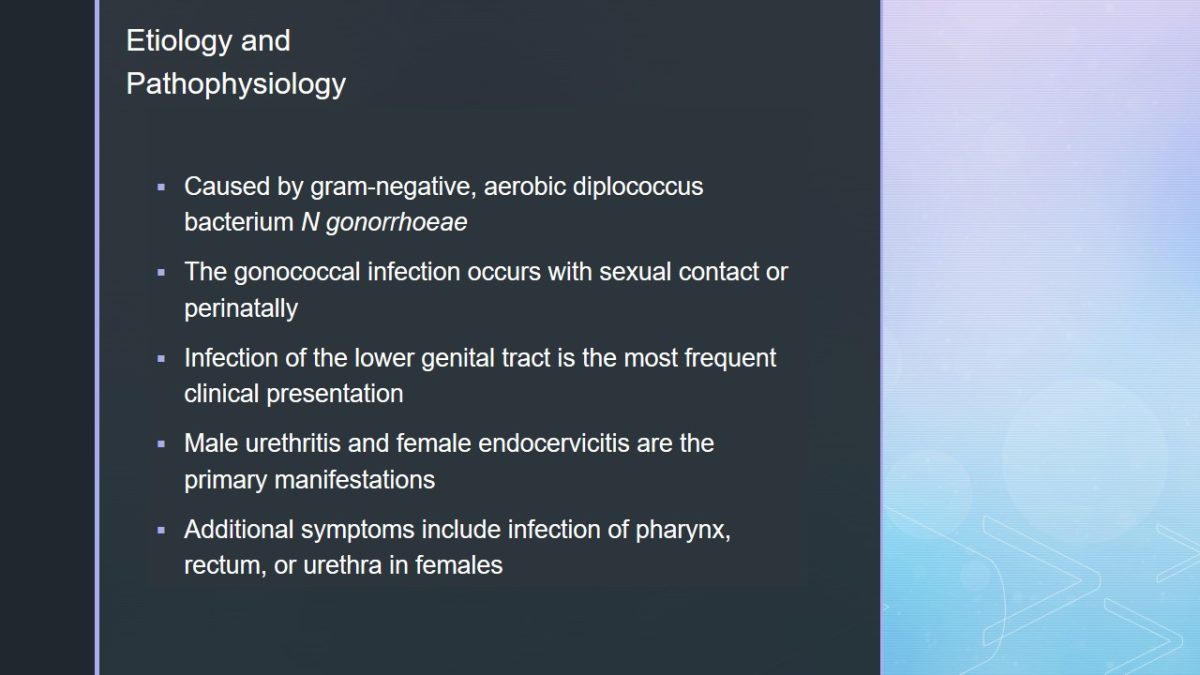
Incidence and Prevalence
- Second most reported notifiable disease in the United States.
- Latest CDC survey in 2016 indicates 468,514 annual cases.
- Increased rate over the last years to 145.8 cases per 100,000 population.
- 48.6% increase over the last ten years since the historic low in 2009 (Centers for Disease Control and Prevention, 2017).
- Community prevalence can lead to higher risk of acquisition and greater disease burden.
The disease prevalence has increased rapidly in the last decade, caused by sexual behavior and risk factors within communities. Risk factors can include racial discrimination, socioeconomic status, and access to healthcare. Furthermore, the disease has seen increased resistance to traditional antibiotic treatment, requiring dual therapy. Statistically, males are more frequently infected than females, with the highest rate occurring in the 20-24 age group.
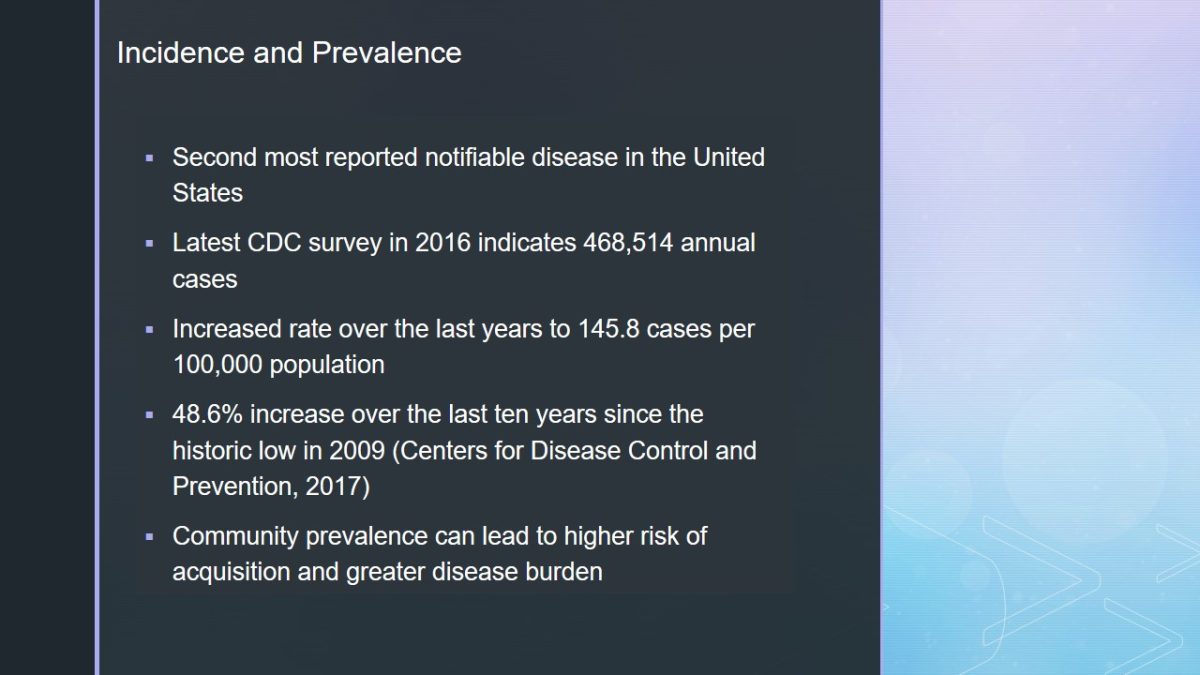
Evaluation
- History should include past incidences and treatment of STDs.
- Known STD symptoms in partners, type of contraception, and menstrual cycle for females.
- Physical examination in females looks for mucopurulent discharge from vagina, urethra or cervix.
- Tenderness in cervix motion or friability as well as in the lower abdomen.
- Males have urethral discharge with the possibility of epididymitis or edema.
- Rectal symptoms include mucopurulent discharge or inflammation, with or without bleeding.
The above are typical signs of the gonorrhea infection. However, they may manifest uniquely in each patient. Furthermore, if the disease has disseminated to the upper reproductive tract, the site of the mucosal infection may not present any symptoms. Some patients may display additional signs of discharge from the eyes, fever, tenderness in the upper abdomen (Wong, 2017).
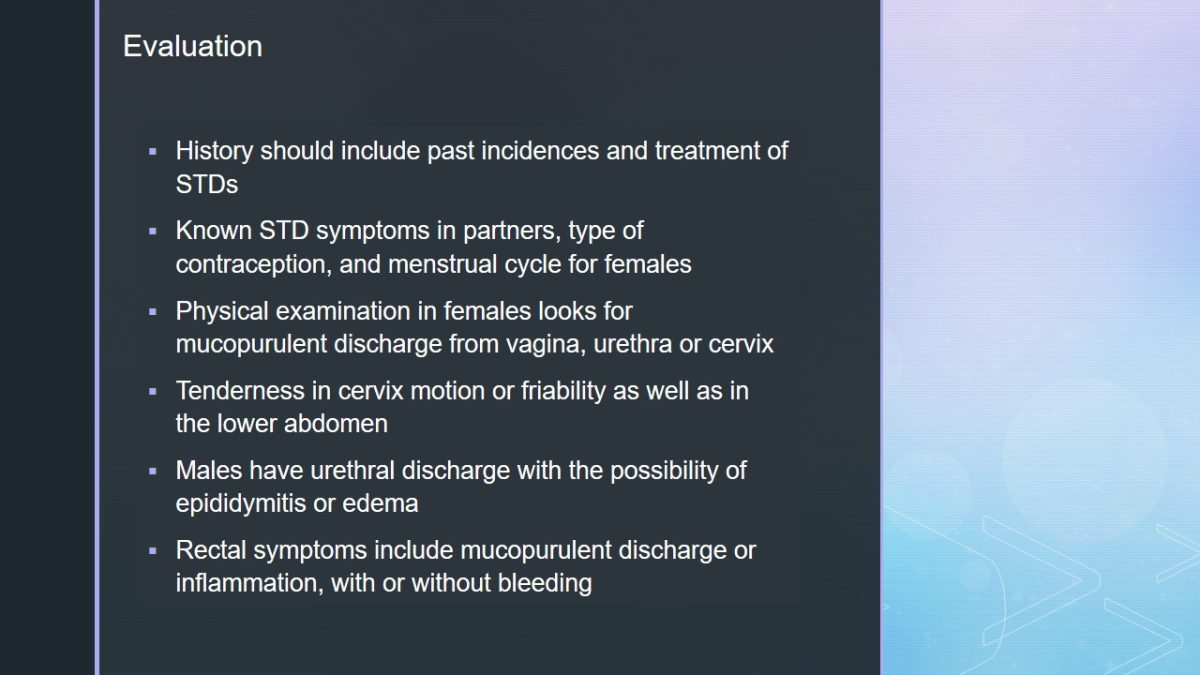
Differential Diagnosis
- Chlamydia infection – an STD with similar presentation, but a more common prevalence.
- Trichomonas – a less common STD demonstrating symptoms of vaginal discharge.
- Pelvic inflammatory disease – infection of reproductive organs caused by STDs.
- Candidal or bacterial vaginosis – caused by disruption of bacterial flora with symptoms of discharge or irritation.
- Urinary tract infection – a common infection with symptoms of dysuria and hematuria.
Many of these differential diagnoses, particularly STDs cannot be differentiated from gonorrhea without a diagnostic test. They present similar symptoms of discharge, irritation, and pain during urination. Chlamydia is particularly difficult to distinguish because the only difference between them is the disseminated infection in gonorrhea. That is a unique feature of gonorrhea as it infects the upper genital tract unlike the other diagnoses (Epocrates, n.d.).
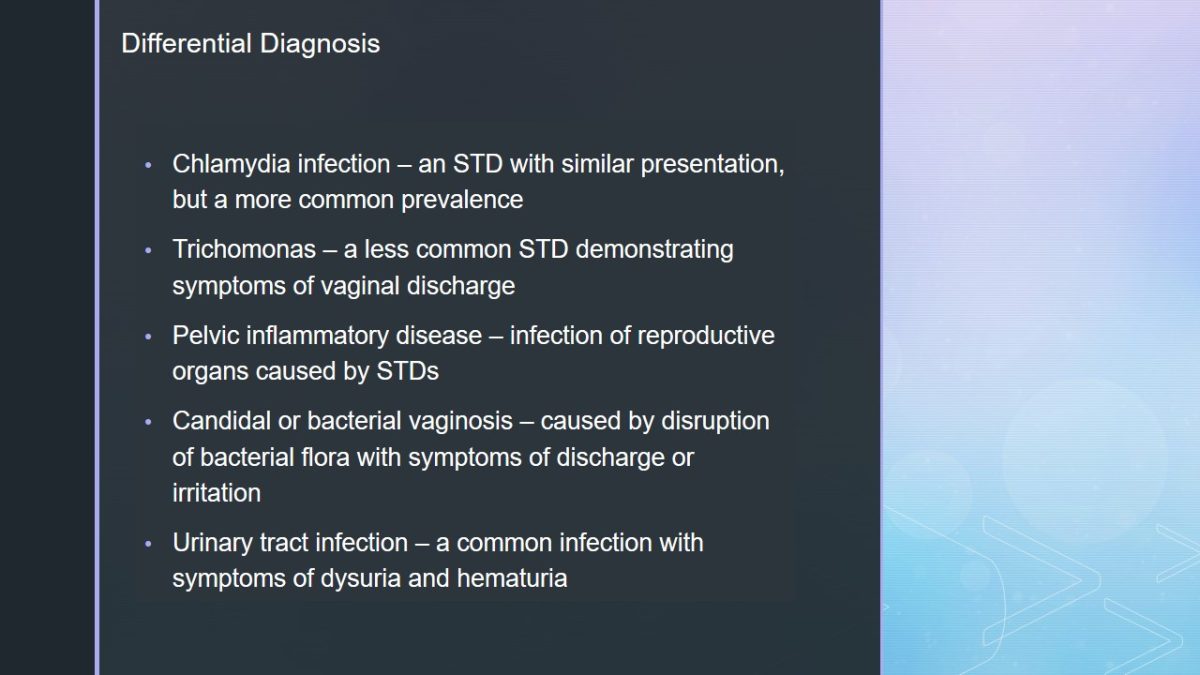
Diagnostic Studies
- Laboratory testing to identify the gonorrhea bacterium.
- Urine test – identifies bacteria in the urethra.
- Gram stain test via swab from the infection site.
- Rare but radiography or ultrasonography can be used.
- Nucleic Acid Amplification Test (NAAT).
The most common diagnostic studies include culture tests via urine or swab. These are usually effective and low cost that can be used on a variety of testing sites. Imaging tests include chest radiography to visualize hemidiaphragm elevation in Fitz-Hugh-Curtis symptom. Ultrasonography or CT scan is used for women to investigate the possibility of pelvic inflammatory disease or to eliminate other causes such as ectopic pregnancy. The NAAT is more expensive, accurate, and sensitive, amplifying genetic sequences in the sample. These tests are helpful when mucosal swab or examination may be difficult (Centers for Disease Control and Prevention, 2013).
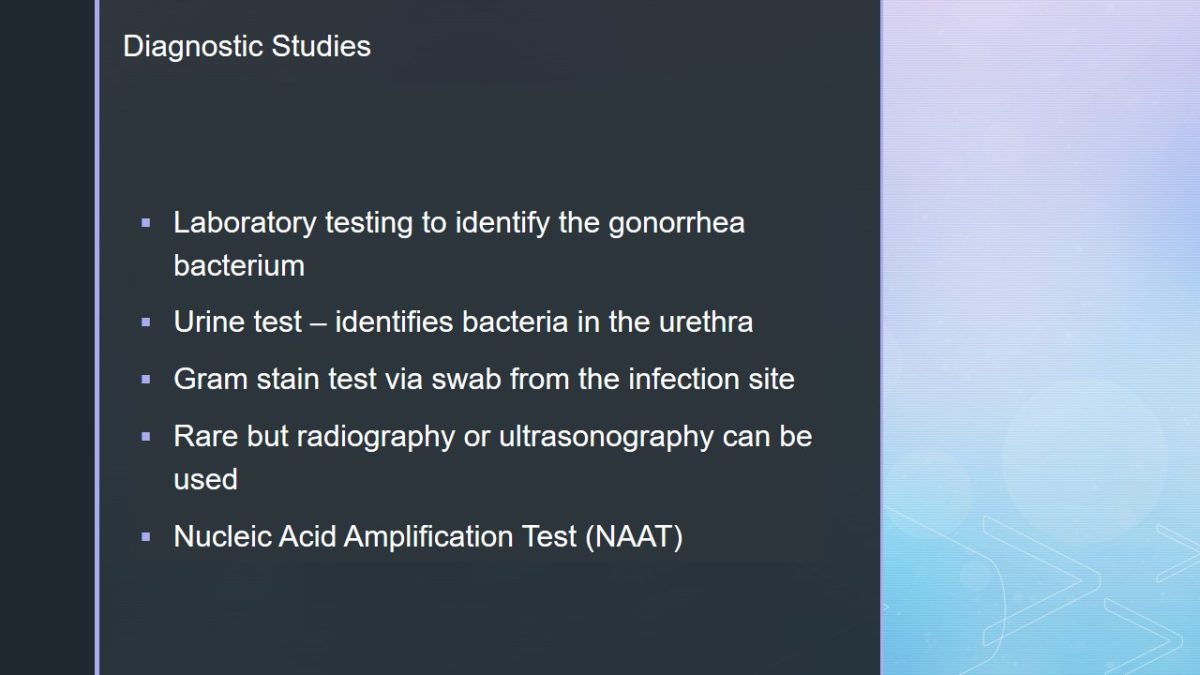
Treatment
- Most treatments are outpatient.
- Females may have a higher risk of complications requiring inpatient treatment.
- Females should conduct a pregnancy test to determine appropriate use of medications.
- Dual antibiotic treatment of ceftriaxone (250mg intramuscular) and azithromycin (1g).
- Single dose injectable cephalosporin or cefixime is safe but usually ineffective.
Like most STDs, gonorrhea is treated with antibiotics. However, the disease has a high resistance which is why a dual treatment is recommended. The dual therapy should be administered simultaneously. Furthermore, those infected with N gonorrhea are commonly infected with C trachomatis as well. Therefore, a dual therapy helps to eliminate any comorbidities as well. This type of approach is thought to be effective as well because of more convenient dosing and therefore, increased patient compliance (Wong, 2017).
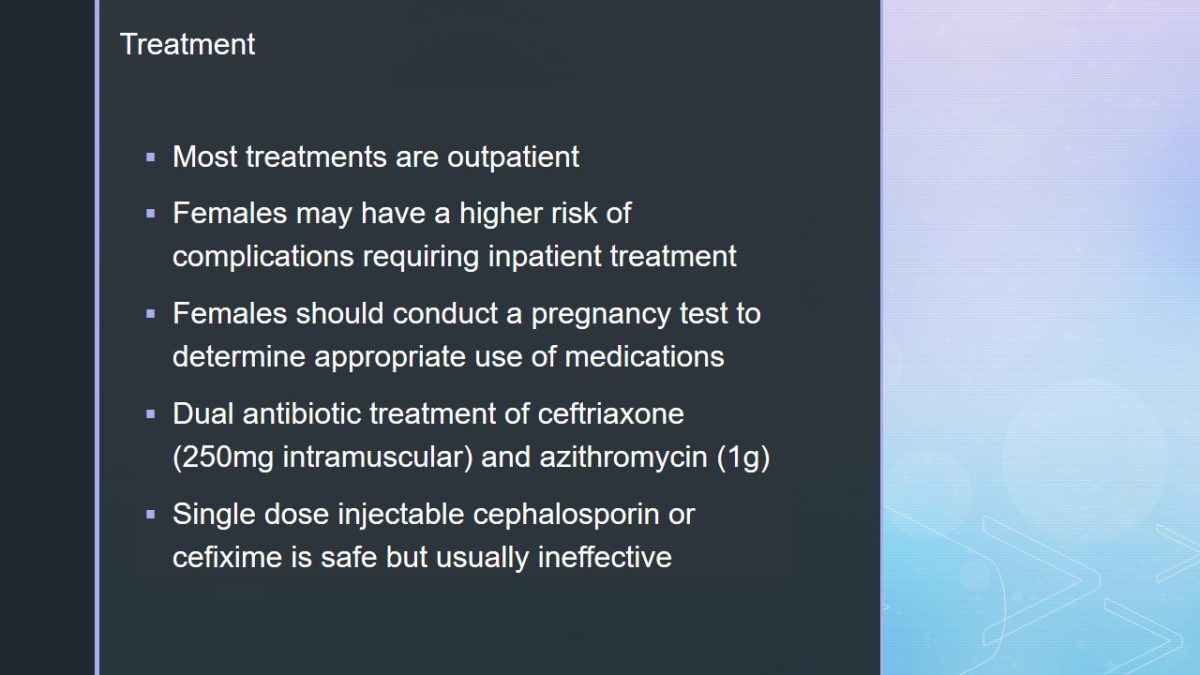
Expected Outcome and Follow-Up
- According to the CDC guidelines, a test-of-cure is not necessary with recommended treatment.
- Monitoring should occur since treatment failure most often results from reinfection from sexual partners.
- CDC recommends reevaluation three months post-treatment.
- If possible, screening should occur within 12 months.
- Patients are recommended to follow-up with primary care physician to reduce the risk of infection.
Treatment outcomes are mostly positive with the dual therapy treatment. However, if any alternative regimens are used, a test-for-cure should occur within 14 days using NAAT or culture test. Some rare instances may result in complications or antibiotic resistance. The patient should maintain contact with their physician. Unfortunately, reinfection is a high probability for people with regular sexual partners (Wong, 2017). Therefore, patient education is a critical factor in producing positive outcomes and reducing infection rates.
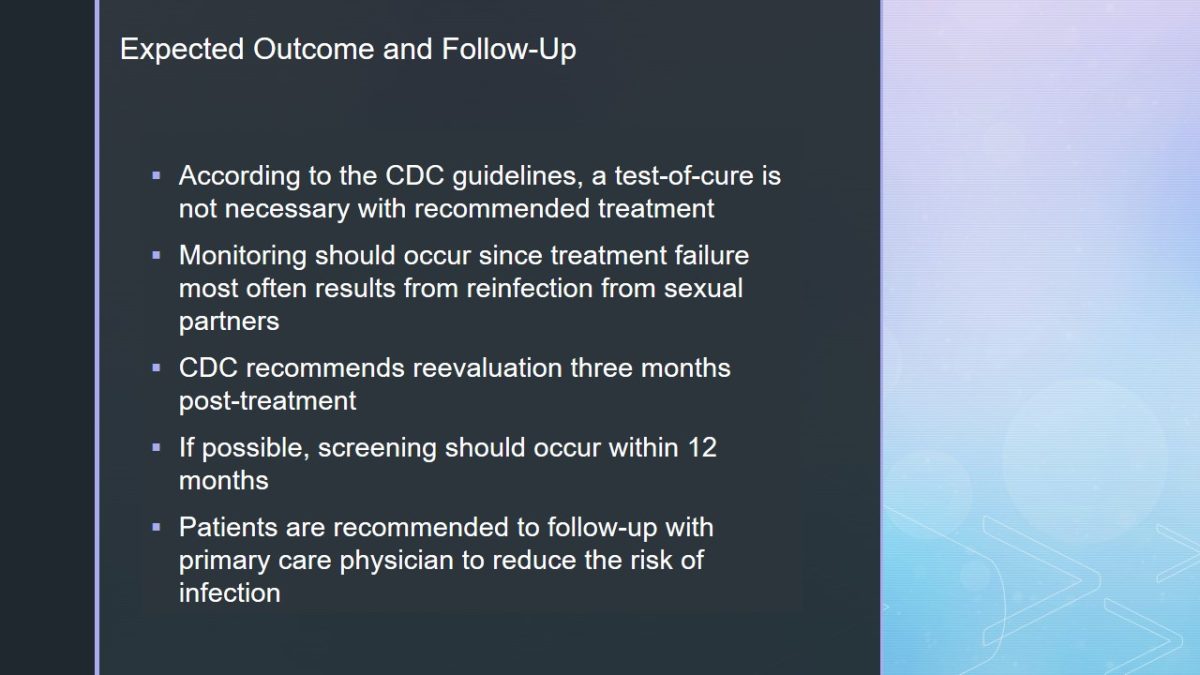
Patient Education
- The patient should be taught the causes and symptoms of gonorrhea.
- Prevention strategies such as the use of condoms.
- Discussion of sexual partners and the infectious nature of STDs.
- Locations and methods for testing for STDs.
- Encourage to see a medical professional if symptoms appear.
Patient education of gonorrhea should focus on the disease as well as STDs in general since the individual may be at higher risk for such infections. It is critical for the patient to understand the transmission process that is influenced by sexual behavioral factors and choice of partners. Furthermore, preventive strategies such as using condoms are a critical aspect of patient education. Finally, the patient should be aware to see a physician and receive testing if there are symptoms or suspicion of gonorrhea or other STDs (Swygard, Seña, & Cohen, 2017).
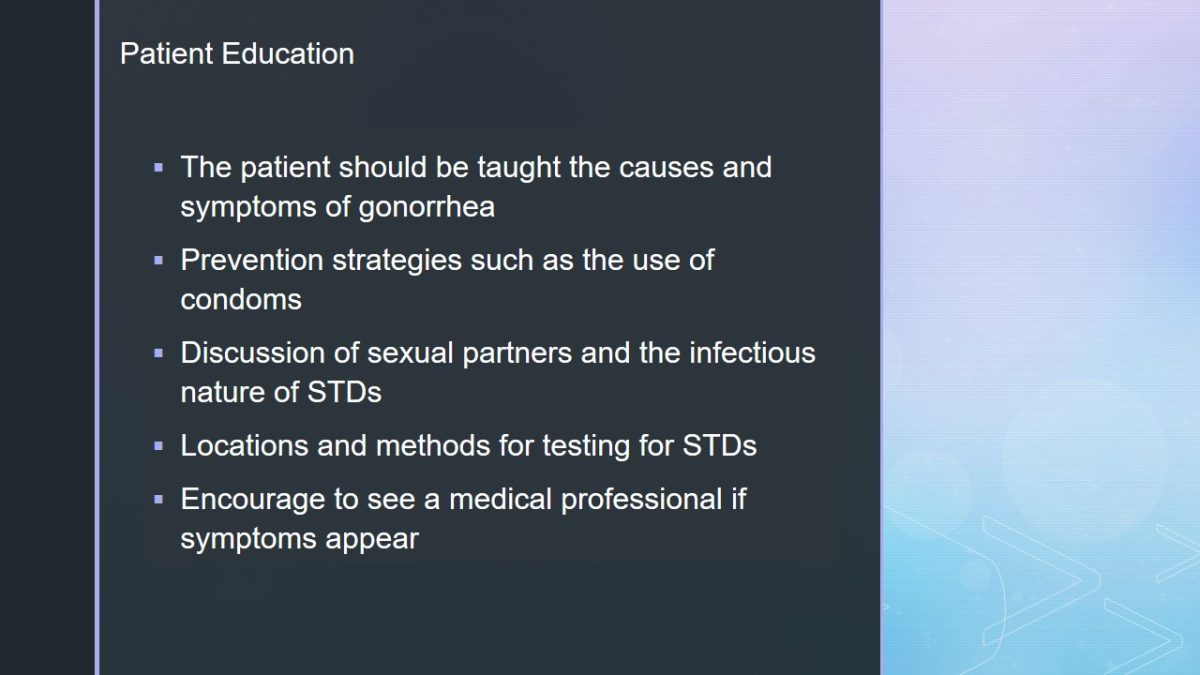
Reference
Centers for Disease Control and Prevention. (2013). STD curriculum for clinical educators. Web.
Centers for Disease Control and Prevention. (2017). 2016 sexually transmitted diseases surveillance. Web.
Epocrates. (n.d.). Gonorrhea infection. Web.
Swygard H., Seña, A. C., & Cohen, M. S. (2017). Patienteducation: Gonorrhea (beyondthebasics). Web.
Wong, B. (2017). Gonorrhea. Web.